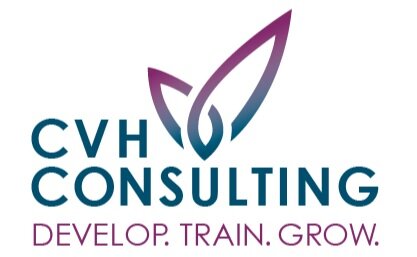Virtual Value
This month I partnered up with Laura Runnels, MPH, to offer helpful insight and tips as we move forward in this new virtual world. Thank you to Laura for joining me.
It was not that long ago, many of us had never heard of Zoom. Thanks to extraordinary efforts to practice social distancing, Zoom and many similar platforms have become the primary source of human interaction for far too many of us. Organizations and communities across the nation scrambled to convert their in-person meetings, conferences, and trainings to the internet. Everything from work-related meetings to happy hours and graduation ceremonies have transitioned to online platforms. All of us have witnessed a seismic change in the way people of the world gather.
The Reality
Folks had to make adjustments quickly, but as time goes on, it is important to reflect and consider the process and effectiveness of how you are doing business.
Bringing people together is a necessary part of professional life. Yet, people love to hate meetings. By now, we’ve all experienced the pains and joys of online platforms, from mundane technical difficulties to the more disruptive zoom-bombings and funny interruptions by kids and pets. And, like with meetings in non-pandemic times, you are probably wondering if you are planning your meetings as well as you can.
We are here to help you reflect and find ways to improve.
The Value of a Professional Facilitator
Professional facilitators use process design, or the art and the science of planning, preparing for, and implementing group experiences, to help organizations make sure their meetings accomplish specific goals. Just because anyone can put together an agenda doesn’t mean everyone can run it well. One way to maximize meeting quality is to apply design principles.
Facilitators can enhance gatherings by establishing objective ground rules, protecting groups against their bad habits, and capitalizing on the strengths of the group. We maximize deliverables by balancing participation, managing conflicts, and empowering groups to take action. And we give groups a sense of closure in their work by helping them reflect on their meeting process.
You might think that hosting a meeting or training online means you won’t need to invest as much time or money. On the contrary, designing learning and sharing sessions for virtual spaces often takes more resources if you want to do it well.
Now more than ever, we must recognize and value the expertise of facilitators, trainers, and educators. But if you aren’t able to hire someone to help you design engaging meetings and training, you can still benefit from a few tips and tricks from the pros.
The Virtual World is Here to Stay
Love them or hate them, virtual meetings and training are with us for the unforeseeable future. The easiest way to improve your sessions is to ask the people who attended what worked for them and what can be improved.
Remember that just because you can meet, doesn’t mean you should. Make sure you give people time to be productive. Nonstop meetings all day, every day can prevent folks from having the time to get their work done and hinder creativity. This is always the case, but we hear many complaints about the high volume of meetings since the start of COVID-19. Zoom fatigue is real.
Let us Help.
In-person events, meetings, and workshops will always be valuable, but until we can return to that way of life safely, let’s work together to embrace the new normal.
As professional facilitators, trainers, and educators, we have the expertise and experience you need to approach your virtual meetings and training with creativity and thoughtfulness.
Please consider a few of our favorite process design tips and tricks are listed below. Honestly, we could write a blog post on each of the topics listed above (and maybe we will).
Let us know how we can help you.
Inclusion
Look for ways to make your events more accessible to those with disabilities.
Establish group norms to improve how people communicate with one another.
Ask each person to respond to a question early on in the session. If someone speaks at the beginning, they are more likely to continue to speak up.
Engagement
Help people stay focused and attentive by breaking up content and activities into 8-12-minute segments.
Keep things fresh by changing up the activities you use to meet your goals for recurring meetings.
Use the bells and whistles (e.g., chats, polls, Q&A, whiteboards) with intention, not just because they exist.
Try to match your activities to your goals. If you want to make sure everyone receives the same information, brief presentations might be best. If you aim to have people share ideas and solutions, breakout rooms allow for more interaction.
Trust and Connection
Request that participants join by video or add a photo to their account profile.
Start the session with introductions. For smaller groups, have everyone respond to a virtual icebreaker. For larger groups, add prompts to the chatbox.
Technology
Hold a dress rehearsal with anyone who is facilitating or presenting during the meeting.
Take time in the first few minutes to have people practice the technology they will need to use later in the session.
Make sure your “backstage” team includes a producer who can run the meeting platform technology.
Select a conference number or alternative video meeting app as a backup.
Please comment below if you have additional questions or comments.
Laura Runnels was born on a mountaintop in Tennessee, raised in a small-town in Mississippi, and educated in Connecticut, California, and Missouri. She has over twelve years of experience providing capacity building assistance to local, state, and federal clients. She is a collaboration engineer known for designing and facilitating highly engaging, efficient, and productive meetings and workshops. Laura holds a masters degree from Saint Louis University and completed her undergraduate studies at Yale University.
Check out Laura’s website.
Thanks again for this wonderful collaboration, Laura!




